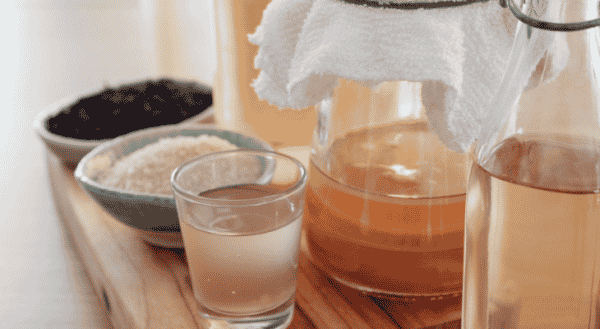How fermented ingredients are causing a revolution in skincare
Having got its start as a cornerstone of the K-Beauty trend, skincare with a fermented element to it is becoming mainstream – and for more than one good reason.
By now, we’re all familiar with fermentation, thanks to the fact that it’s what makes everything from sourdough and miso to sauerkraut and kombucha possible. But recently, the fermentation process has hit the beauty and skincare industry in a big way. In fact, some forecasters predict that fermented skincare is one of the trends that will boom in 2022 and beyond.
It all began in South Korea, where K-Beauty was born, which is fitting considering Korea is also the home of kimchi and gochujang, two popular fermented food items.
But while we all know what fermentation can bring to the table – delicious flavour and gut-health benefits – the role it can play in skincare might be a little less obvious.
As a natural process that physically changes the chemical structure of an ingredient, here are five things to know about fermentation in skincare to help understand why it’s so appealing to “skintellectuals”, an increasingly large group of consumers that are well educated when it comes to skincare ingredients.

Fermentation makes an ingredient more potent
Introducing a microbe, bacteria or yeast to a skincare ingredient like soy, rice or tea in order to ferment it ends up breaking it down into smaller, more concentrated molecules that have a higher potency. Plus, the fermentation process also leads to the formation of “new” ingredients that are known to play a key role in skin health – things like peptides, amino acids, vitamins and antioxidants.
For example, research shows that compared to non-fermented rice bran, rice bran that’s been fermented has increased functional properties when it’s used in a skincare product. Similarly, when it’s fermented, yeast extract has been shown to support the synthesis of collagen, a protein that’s one of the main building blocks of skin.
Fermented ingredients are easily absorbed
Another benefit of breaking ingredients down into smaller molecules is the fact that this also improves how easily they can penetrate the skin. Along with improved potency, this increase in absorbability is another factor that bumps up an ingredient’s effectiveness.
It’s good for the skin’s microbiome
That’s the collection of micro-organisms – everything from bacteria to fungi – that live on the skin to protect and maintain its health. While not quite as well known as the gut microbiome, research shows that consumers are becoming increasingly aware of the skin microbiome, including the role it plays and what it takes to support it – and fermented skincare can help. One explanation for this is that some fermented ingredients also provide probiotics, which are friendly bacteria, and bioactive compounds called postbiotics, which may help to balance the skin’s microbiome.
Fermented skincare tends to have a superior shelf-life
Another benefit of the fermentation process is that it triggers the growth of beneficial bacteria, like lactic and acetic acids, that can act as natural preservatives. Not only does this mean that products with fermented ingredients tend to last longer, they’re often free of the parabens that are commonly used as preservatives in skincare products.
Consumers have their eye on a few key fermented ingredients
And they tend to know exactly what they do, too. Ingredients that are often on a skintellectual’s radar include fermented lysates, fermented soy, fermented teas, like black and green tea, fermented yeast and fermented seaweed and rice. Which is why you probably can’t afford to ignore them.
Did you find this article interesting? Subscribe here to the Naturally Good News and get regular updates on other industry insights and trends to keep an eye on.
-
Get your FREE ticket
- REGISTER FOR FREE
